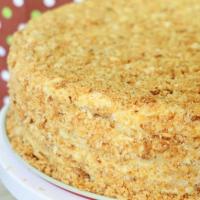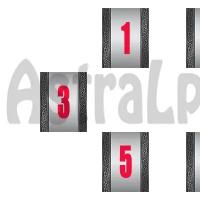Producing the sounds sh, zh, ch, shch in several ways. Staging the sound sch, articulation of the sound sch Lesson on setting the sound sch
Subject: Sound production[ SCH]
Target:
1. Educational:
Strengthen the ability to correctly pronounce the sound [u];
2. Corrective:
Development of phonemic hearing;
Development of phonemic analysis skills;
3. Educational:
Cultivate a positive attitude towards the activity;
Equipment: picture (elephant), sound articulation profile [ш].
Plan:
I .Org.moment
Greetings. Report the topic of the lesson.
II .Main part
1.Articulation gymnastics
3.Finger gymnastics
4. Exercise to develop speech breathing
5. Exercises to develop facial expression
6. Announcement of the topic of the lesson.
8.Sound production.
9. Physical exercise.
11.Development of phonemic hearing.
III .Result
Assessment of the child's activity.
Progress of the lesson
I .Org. moment.
Greetings
Hello. Today such a wonderful elephant came to our lesson. His name is Dumbo. Our elephant, very smart, can speak, knows almost all sounds and letters, but he cannot pronounce the sound [у]. Can you help the elephant?
II . Main part.
1.Articulation gymnastics
-Now we will do the exercises, we will put the elephant next to the mirror, in front of you, so that you can show him how to do them correctly.
"Smile"
Keeping your lips in a smile. The teeth are not visible.
Our Deniska is a mischief maker
Pulls lips towards ears.
“Look,” he says.
-I'm a frog now!
"Delicious jam"
Open your mouth slightly and lick your upper lip with the wide front edge of your tongue (the tongue is wide, its side edges touch the corners of the mouth), moving the tongue from top to bottom, and not from side to side. Make sure that only the tongue works, and the lower jaw does not help, does not “pull” the tongue upward - it must be motionless (you can hold it with your finger).
If Denis is in a bad mood,
Deniska is eating our delicious jam.
You need to spread jam on your upper lip,
And use a wide tongue to lick everything at once.
"Punish the naughty tongue"
Smile widely. Place your wide tongue on your lower lip and, lightly biting it with your teeth, say “ta-ta-ta” for 5-10 seconds. Then slap your tongue with your lips, saying “five-five-five” for 5-10 seconds.
Your tongue is mischievous,
He doesn't listen to you.
Punish him quickly:
“Five-five, five-five, five-five-five!”
"Pancake"
The mouth is open, a wide, relaxed tongue rests on the lower lip. We slap the tongue with our upper lip: five-five-five. We slightly bite our tongue: ta-ta-ta.
We get up early in the morning,
We bake delicious pancakes.
A trickle across the frying pan
The dough spreads...
Look how handsome he is
It turns out to be a pancake.
"Brushing our teeth"
Smile, open your mouth with the tip of your tongue from the inside to “brush” your lower and upper teeth alternately.
Open your mouth, smile,
Show me your teeth
Clean the top and bottom
After all, they are not superfluous to us
"Big and small"
3.Finger gymnastics
Let's show the elephant how well you and I do finger gymnastics.
Our fingers pressed tightly together
What's happened? Interesting!
Apparently they got cold
We will cover them with a blanket.
They clench their left hand into a fist, and grab it with their right hand and squeeze it tightly. Then they change hands. Then they lower their hands and shake them slightly. Repeat the exercise several times.
4. Exercise to develop speech breathing.
Let's teach the elephant how to do breathing exercises.Inhale calmly through your nose, hold the air in your lungs for 2-3 seconds, then exhale slowly, exhaling smoothly through your mouth.
"Let's freeze the chin"
Target: form a long, continuous oral exhalation, activate the labial muscles.
Pull your lower lip under your upper lip and blow cold air down under your chin for a long time, perform it silently and on one exhalation.
"Rain"
Target: formation of speech breathing, the ability to pronounce words on one exhalation.
1 - alternately put straight arms forward - “catch drops” (inhale); 2 - while exhaling, say: “Drip-drip-drip!”; 3 - alternately put straight arms forward - “catch drops” (inhale); 4 - as you exhale, say: “So-so-so!” Repeat 3-4 times.
5. Exercises to develop facial expression.
Imagine that now (in November) Santa Claus has come to us.
Imagine that we have a fluffy kitten on our lap. He purrs and you pet him.
Grandfather and woman blinded the Snow Maiden, and she came to life before their eyes. What do the faces of the grandfather and woman express?
Show how Alyonushka sits and looks at brother Ivanushka.
6. Announcement of the topic of the lesson.
Now you and I will learn to correctly pronounce the sound [sch]. And let's teach the elephant.
7. Analysis of articulation according to plan.
When making the sound [ш], the lips are slightly moved forward and rounded. The tip of the tongue is raised to the cusps behind the upper teeth. The lateral edges of the tongue are pressed tightly against the upper molars. The back of the tongue is raised. The tongue is tense. The vocal cords are resting, the throat is not trembling (no voice).
Sound [Ш]- consonant, deaf, always soft.
8.Sound production.
Now I’ll tell you a fairy tale about a little train. Our little locomotive will be the tongue, and the rails will be the molars. The engine can't get on the rails, let's help him?Okay, let's go! Press the lateral edges of the tongue, like wheels, against the upper molars. Make sure that the “wheels” stand firmly on the rails and under no circumstances move off them! (The child should feel how the side edges of the tongue are pressed firmly against the upper teeth). Now blow on the train to make it go. Well done.
Backup methods if the previous methods do not work:
1. The simplest way to produce Shch is from the sound Ch. To do this, Ch needs to be pulled for a long time and then at the end the sound Shch will be heard. Then you need to stretch out this sound as long as possible, trying to speak as quickly as possible.
Attention! Don’t forget to make sure that when pronouncing the sound Ch/Sh, the child stretches his lips forward and raises his tongue to the upper teeth.
2. Pronounce smoothlyshch. You should draw the child’s attention to the fact that when pronouncing a soundsch the lips are smiling, the teeth are visible, the tongue is raised behind the upper teeth.
9. Physical exercise.
One - get up, pull yourself up
Two - bend over, straighten up
Three - three claps of the hands, three nods of the head.
Four - wider legs.
Five - wave your arms
Six - sit down quietly at the table.
10.Fixation of isolated sound.
Tell me, did you see how mom fries potatoes? When she puts oil on a hot frying pan, it sizzles: “shch...” How does it sizzle?.. Have you seen snakes at the zoo? Do you know how they hiss? Listen: “shchshch...” Let us now repeat together how snakes hiss...
-Now let’s vigorously clean the trousers with a clothes brush: “Sch-Sch-Sch - …”
Let's talk a tongue twister with you:
ASCH-ASCH-ASCH, ASCH-ASCH-ASCH: we bought a raincoat.
OSCH-OSCH-OSCH, OSCH-OSCH-OSCH: who needs help?
OSCH-OSCH-OSCH, OSCH-OSCH-OSCH: horsetail grew in the garden.
USCH-USH-USH, USH-USH-USH: there is ivy behind the fence.
MORE, MORE, MORE, MORE: we caught bream.
11.Development of phonemic hearing .
- “Catch the sound”: clap your hands when you hear the sound ш among other sounds, syllables: tsa, re, [osh], ta, sh, cabbage soup, [sa], zo, [schu], ne, [ash]
III . Summary of the lesson.
Well done, you tried really hard today, I’m very pleased with you. Elephant, he also says thank you, you helped him a lot. Tell me, what sound did we learn to pronounce today? What did you like about our lesson? You can be free.
The hissing sounds “Ш” and “Ш” are introduced after the child has successfully. This is due to the fact that hissing and whistling consonants have the same formation principle. It looks like this: the air stream, leaving the windpipe, passes through the gap formed by the groove of the tongue. In this case, the tongue is slightly concave, its lateral edges touch the tubercles of the alveoli.
We train the organs of the speech apparatus
To successfully produce the consonant sound “sh” the following exercises will be most useful:
"Wide tongue"
Invite your baby to smile broadly, like a monkey. Give him a mirror to make it more fun for him. Then ask him to smile and, slightly opening his mouth, show his wide, relaxed tongue like a pancake. After this, have him place his tongue on his lower lip. It is advisable to hold the tongue in this state (placing it on the lower lip) for a count of one to five.
"Hide the candy"
Ask the young student to place a wide tongue on the lower lip in a “pancake” manner (as described in the previous exercise). Place a small piece of some sweet on the edge of his tongue: marshmallow, marshmallow or toffee. Now you need to “hide” a piece of sweetness in your mouth, gluing it to the roof of your mouth, behind your upper teeth.
Important point: During this exercise, the child’s mouth should not open too wide, no more than 1.5–2 cm. The exercise should be performed at a slow pace, and this can be difficult, since any baby will try to eat the candy faster.
"Small Mushroom"
To complete this task, it is better to use a mirror.
Ask your child to smile broadly, open his mouth and show his teeth. Then he should try to press the entire body of the tongue to the palate. While holding your tongue in this position, you need to try to open your mouth as wide as possible. If the baby looks in the mirror at this moment, he will notice the resemblance of the tongue to the thin cap of a small mushroom, and the frenulum of the tongue to its stem.
"Hocus Pocus"
This exercise develops the skill of creating a groove in the middle of the tongue, which is an important skill for making the “Sh” sound in the future.
Step 1. The child “shows” a wide, relaxed tongue. He slightly sticks it out of his mouth and places it like a “pancake” on his lower lip. The mouth remains slightly open.
Step 2. Presses the edges of the tongue in this position to the lateral corners of the mouth, and the tongue itself slightly narrows, forming a “groove”.
Step 3. A piece of cotton wool is placed on the tip of the baby's nose. Ask your child to deflate it while maintaining the tongue position described in the previous steps.
If the task is completed correctly, the air formed during exhalation will pass through the middle of the “groove” and rise to the top, blowing away the cotton wool lying on the nose.
At the end of the articulatory exercise, it is advisable to carry out several exercises.
Learning to pronounce "Sh"
If children did not have difficulties pronouncing the sound “S”, then they most likely will not have problems with the production of the consonant “Sh”. Then you can start making the sound “Ш”, and it’s better to do it as follows.
 Step 1. Invite your baby to say “S”, a long “S-s-s”, or sing the syllable “S-a-a-a”. Take a mirror and ask him to record the position of the tongue while doing this.
Step 1. Invite your baby to say “S”, a long “S-s-s”, or sing the syllable “S-a-a-a”. Take a mirror and ask him to record the position of the tongue while doing this.
Step 2. While pronouncing a long “S-s-s”, using a spatula or the index finger of your right hand, lift the tip of the child’s tongue higher and hold it slightly behind the upper teeth. It is necessary that the tongue touches the tubercles of the alveoli.
Step 3. Ask the student to exhale a stream of air again, maintaining the previous position of the tongue, and you will clearly hear how “S-s-a” changes to “sha”.
Attention: When making the sound “SH”, it is very important to ensure that children do not rest their entire tongue on the roof of their mouth! This can cause incorrect positioning of the speech organs when pronouncing “Sh”.
Result:
As a result of a correctly performed production of the consonant “Ш”, the following articulation of this sound should be developed:
- The speaker's lips are slightly rounded and slightly moved forward.
- There is a distance of 1 mm between the upper and lower teeth at the moment the sound is pronounced.
- The wide tongue is raised to the alveoli with a “scapula”, but does not touch the palate; There is a gap between the tongue and the palate.
- The lateral edges of the tongue fit tightly to the base of the upper molars.
- The air stream exhaled when pronouncing “Ш” is abundant and warm.
Learning to pronounce "Ш"
Setting up the consonant “Ш” is easier if you use the basic points of articulation of the soft sound “C’”. If a child successfully pronounces the soft “S’” in the syllables “xia” “se”, “si”, “siu”, then he most likely will not have problems producing the “Sh” sound.
However, if pronouncing “Ш” causes difficulties for children, then this sound can be produced mechanically. How to do it?
Invite your child to pronounce the syllables “as” or “sya”. At the moment the baby pronounces these sounds, the adult should use a spatula (or index finger) to correct the position of the tongue, moving its tip behind the base of the upper incisors.
You can try to produce the sound “Ш” without mechanical correction. To do this, simply invite the children to experiment during the lesson, changing the position of the tongue in the mouth at the moment they pronounce the syllables “sya” and “as”. Analyze together what happens in this case, what sounds?
We reinforce the correct pronunciation of “Ш” and “Ш”
To automate the pronunciation of these sounds, classical methods and techniques are used: tongue twisters, tongue twisters, reading and analysis of texts.
 "SH"
"SH"
Our Masha is small, she wears a scarlet fur coat.
We gave Dasha porridge,
Dasha, Dasha, eat your porridge!
Grandma has a lot of spools in her box. Our cat loves to play with reels.
"SCH"
The puppy pricked his paw with a splinter, it hurt him, he squeaked.
The goldfinch was a dandy.
What do we know about goldfinches?
Goldfinches are small, beautiful birds that live in deciduous forests. The food of goldfinches is the seeds of birch, aspen and thistle. Goldfinches love to live not only in forests, but also near human habitation - in gardens and parks. Goldfinches make nests high on tree branches, and their goldfinch chicks are born from eggs of an amazing color - blue, with dark spots and small strokes. In autumn, goldfinches gather in large flocks and fly away to where the winter is warmer.
Analyze the text using elements of speech development tasks. Ask your child to tell you what he learned about goldfinches, what did he remember most? What are goldfinches chicks called? Where do goldfinches live?
While performing this task, ensure the purity of pronunciation of the sounds “Ш” and “Ш”, if necessary, repeat the exercises to correct them and correctly pronounce them.
Teacher, child development center specialist
Druzhinina Elena
Setting the sound “Ch” and “Shch”
Setting the sound "SH"
- Tip of the tongue lift to the front of the palate (to the alveoli). We press the lateral edges of the tongue more tightly to the upper molars than when making the sound sh. At the moment of exhalation, we press the entire mass of the spread out tongue and the tip onto the palate. We tense the muscles of the tongue.
- Lips slightly push it forward and round it.
- Teeth we close or bring together.
- Exhaled air passes in the middle of the tongue into the resulting narrow gap; on the palm brought to the mouth, a warm, long-lasting stream of air is felt, coming out with some tension.
- The sound is dull, soft.Vocal folds open so they don't vibrate.
We start setting up the sound sh only after setting the sound w. First you need to try out sound production by imitation. If imitation exercises do not produce an effect, proceed to the exercises below. In case of poor pronunciation of the sound ь, it is necessary to achieve its production. The sound u is pronounced in the same way as the sound w, only more elongated and tense due to the strong pressure of the tongue on the palate.
PREPARATION EXERCISES
Exercise. We open our mouth. It is necessary to suck the entire tongue to the palate so that the “frenulum” is stretched. We raise the tip of the tongue to the front of the palate (to the alveoli). The child performs this exercise with the help of a speech therapist, who places his finger under his tongue in a horizontal position. The finger presses the tongue to the palate in the middle part.
Having taken in air, we exhale it forcefully, trying to pronounce a long sound sh. Will hear the sound In this case, the tongue should spring back. The elasticity of the tongue and the gap are regulated by a speech therapist using finger pressure. We achieve long sound. For clarity, when pronouncing the sound sch, the speech therapist pronounces it together with the child.
Stage II of work
(conducted as part of the lesson)
Subject. Clarifying the pronunciation of an existing sound sch or calling it by imitation.
Target. Encourage children to pronounce sounds correctly sch. Learn to determine the position of the tongue when pronouncing a sound sch.
Previous work. The ability to hold your lips in a smile and make your tongue wide was formed while practicing sounds and, uh, s. The upward movement of the tongue was developed in the process of familiarization with sounds t, d, n, w, f; directed air jet - with sounds f, v, s, h, w, g.
Preparatory work. Clarify how children pronounce sounds sch.
Game "Who is observant?"
Short description
Children sit in a semicircle or at tables. The speech therapist asks: “Children, have you seen how mom fries potatoes? When she puts oil on a hot frying pan, it sizzles:
“shch...” How does it hiss?.. Who saw snakes in the zoo? Do you know how they hiss? Listen: “shchshch...”
Now let's repeat it all together, like snakes hissing... Children complete the task first all together, then individually.
"When we say sound sch, where is the tip of the tongue? - asks the teacher. (“The tip of the tongue is behind the upper teeth”;) “Show me where the tip of the tongue rises.” During the demonstration, the speech therapist checks how each child performs the exercise.
Methodical instructions. To help children pronounce sounds well sch, it is necessary to monitor the correct position of the organs of the articulatory apparatus. If a child has a sound sch if it doesn’t work, you need to invite him, with his mouth open, to raise the wide tip of his tongue to the upper alveoli and, without lowering it, pronounce the combination of sounds together sew, then you get the sound sch. Or, with the same position of the organs of articulation, pronounce together shch. Children should be drawn to the fact that when pronouncing a sound sch the lips are smiling, the teeth are visible, the tongue is raised behind the upper teeth.
III stage of work (conducted as part of the lesson and outside the lesson)
Subject. sch
in words.
Target. Train children in correct pronunciation
sound sch in words.
Previous work. The pronunciation of an isolated sound has been clarified sch.
Preparatory work. Find objects and toys that have a sound in their names sch, For example: brush, puppy, sliver, box, raincoat, pliers and etc.
Game "Scouts" Brief description
The teacher hides objects in different places in the room. Having invited the children and seated them in a semicircle, the teacher says that they will play “scouts”. Children need to find hidden objects. (Names which ones.) A group of scouts is allocated for the search: everyone must bring the item they find and name it. The one who found and named the object receives a “scout badge.”
Methodical instructions. Make sure that when naming an object, children highlight the sound sch, pronouncing it a little longer than other sounds. When the child brings the object and names it, you can invite the children to repeat the name of the object together, and then ask those children who need to consolidate this sound in words to repeat it.
IV stage of work (conducted as a whole lesson)
Subject. Education of correct pronunciation of sound sch
in speech.
Target. Exercise children in correct pronunciation of sounds sch
when answering questions about the story “Comrades.”
Previous work. Sound pronunciation has been clarified sch
isolated and in words.
Preparatory work. Select questions based on the content of the story.
The story "Comrades"
Two friends went for a walk V grove. They took the puppy with them. The comrades walked through a flowering meadow. There they collected sorrel. The puppy was chasing flying butterflies. They came to the grove. Good in the grove! Birds chirp, goldfinches sing, chicks squeak. Near the stump, the comrades saw a lizard running away. Children ran around V grove, played with the puppy. They wanted to go further into the forest, into the thicket. One of the comrades says: “Let’s not go there, wolves prowl there, looking for food.” The comrades laughed at the joke and decided that it was time to return. Satisfied, they went home. The boys carried sorrel, and the puppy carried a chip. They returned home for lunch and ate cabbage soup, fried pike and vegetables with appetite.
Methodical instructions. Make sure you pronounce the sound correctly sch.
Poems, nursery rhymes, riddles, tongue twisters For consolidation of pronunciation sound sch
***
The puppy was so puny!
I kept feeding him cabbage soup,
Protected from the fierce cold.
The puppy squeaked with joy,
Still would! He grew up happy!
Now my puppy is not a puppy, but a dog -
Real!
***
Two puppies cheek to cheek
They pinch the brush in the corner.
And the floor brush
There is a stick above your head.
A stick is a snap of puppies from the shoulder,
Two puppies left the food.
***
Fluttering fins
And toothy, but skinny,
Looking for food for lunch,
The pike is walking around the bream!
That's the thing!
***
Eyes, mustache,
Tail, claws,
And he washes himself cleaner than everyone else.
Who is this? Cat-cat!
***
Mom, don’t look for us -
We pinch sorrel for cabbage soup.
In the grove, the grass is moving,
We'll pinch the sorrel.
***
I'm cleaning the puppy with a brush,
I tickle his sides.
***
A pike lived in the river,
Chalk water with a brush,
I cooked cabbage soup for the guests,
She treated the minnows.
Techniques for making sounds [w], [zh], [sch], [h]
Preparatory stage. In the absence of the sound [w], work begins with the formation of correct articulation of the sound: the ability to slightly push the rounded lips forward is developed; raising the wide anterior edge of the tongue to the tubercles behind the upper teeth; the ability to press the lateral edges of the tongue to the upper molars; a long-lasting air stream running down the middle of the tongue.
Staging . The technique of imitation is used and attention is paid to the correct position of the organs of the articulatory apparatus (they are asked to pronounce SA several times and during pronouncing, gradually (smoothly) raise the tongue up, the lips are slightly extended like a tube). With the mechanical method, probe No. 5 is used from the syllable SA, tongue up.
Interdental sigmatism
Preparatory stage: exercises are carried out to lift the tip and front part of the back of the tongue by the upper teeth; generation of a directed air jet; the sound [t] is practiced, which requires lifting the tip of the tongue by the upper teeth.
Staging. The child is asked, with his mouth open, to pronounce aspirated [t] 4-5 times at a slow pace, hitting the tubercles behind the upper teeth with the tip of his tongue; Gradually lengthen the exhaled stream and do not hit the tubercles, but only raise the tip of the tongue towards them.
Lateral sigmatism
Preparatory stage: exercises are carried out to strengthen the lateral edges of the tongue, uniformly lift both halves of the tip and the front part of the back of the tongue upward; producing an air stream running in the middle of the tongue; [t] and [s] are processed.
Staging. Mechanical assistance is used (probe No. 5, a flat, narrow, slightly curved handle from a teaspoon), lift the wide tongue behind the upper teeth, move it back to the tubercles, ask the child to lightly clamp the spoon with his teeth and pronounce [s] for a long time (all front teeth time are visible).
Nasal sigmatism
Preparatory stage: the ability to hold a wide, spread tongue on the upper lip is developed; direct the air stream to the tip of the tongue raised on the upper lip; to distinguish by ear the sound of [w] in nasal and oral pronunciation, [t] and [s] are practiced.
Setting [w] from [s] with mechanical assistance
If there is [r], then when pronouncing RA, use a spatula or probe No. 5 to stop the vibration of the tongue - a hissing is heard. When RA is pronounced in a whisper, SHA is heard, when pronounced loudly, ZHA is heard.
Labiodental sigmatism
Preparatory stage: the child is taught to compare and distinguish by ear [w] - [f], using pictures-symbols; exercises are carried out to practice up and down movements of the lower lip; lifting the wide front edge of the tongue upward.
Staging. They put [w] by imitation, using visual control. Make sure that the lower lip is motionless and exposes the lower incisors (the lips can be held with your finger). Mechanical reception from [s] is possible.
Dental sigmatism
Preparatory stage: the ability to compare and distinguish by ear [w] - [t] is developed, using pictures-symbols; distinguish the sounds [w] - [t] based on tactile sensations of the air stream ([w] - long, [t] - jerky); exercises for long-term directed air stream; the position of the wide anterior edge of the tongue at the tubercles behind the upper incisors; processed [s].
Staging: by imitation (visual control and tactile sensations).
Hissing sigmatism
Preparatory stage: compare and distinguish [w] - [sch], using pictures-symbols; the ability to raise the wide front edge of the tongue to the tubercles behind the upper incisors; alternate movements of the wide tip of the tongue from the base of the upper incisors to the front of the hard palate (forward - backward).
Staging. From [with] a mechanical technique (pushing the tongue back).
Whistling sigmatism
Preparatory stage: compare and distinguish [s] - [w], using pictures-symbols; difference in air flow ([s] - cold, [w] - warm); upward movements of the wide tongue; alternating movements of the wide tongue for the lower - upper teeth; alternating lip movements: stretching into a smile - closed forward (tube).
Staging. Method of imitation.
Sound [w] placed from [w] by connecting vibration of the vocal folds.
Among the disadvantages of pronunciation [ch], in addition to those that are common to all sibilants, it should be noted the replacement of [ch] with a soft whistling affricate [ts"], as well as the sounds [t"] or [sh"].
Sound [h] placed from [t]: with the tip of the tongue raised upward, it is moved further inland from the upper incisors. The child is asked to pronounce Тъ-Ть or Т’И (AT’) with the tip of the tongue raised upward, while pushing the lips forward. You can use probe No. 5 to retract the tip of the tongue back.
The correct pronunciation of [h] can also be achieved by pronouncing the sound combination ТШ simultaneously, first at a slow, then at a fast pace.
Among the disadvantages of pronunciation [ш] there is a shortened pronunciation (as with [ш]), replacement of the sound [ш] with [s"], pronunciation [ш] with an affricative element (like the combination Ш'Ч). The sound [ш] often appears automatically after [w, f, h] are placed.
To call [u]the child is asked to pronounce [sh] for a long time, stretch his lips into a smile, moving his tongue forward => [sch]. You can also ask the child to say [ch] for a long time.
A mechanical method is possible: the child pronounces S’I or S’A several times, the speech therapist inserts a spatula or probe under the tongue and, at the moment of pronouncing the syllables, slightly lifts it, moving it back a little (or simply moving it away with the touch of a spatula).
Automation of hissing sounds
The delivered sound is sequentially introduced into syllables (direct, reverse, with confluence), words and phrasal speech. With sigmatisms, they end with the stage of automation, with parasigmatisms - differentiation of [w] with substitute sounds: with [f] with labial-dental, with [t] with dental, with [sch] with hissing, with [s] with whistling parasigmatisms.
Sound [sh]
Preparatory stage
Lesson 1
Spatial orientation
Cross orientation.
- Place your right hand on your left shoulder. Place your left hand on your right knee. Touch your left ear with your right hand. With your left hand touch your right cheek.
“We go up the mountain, we go down the mountain.” Pronunciation of syllables in combination with movements of the index finger.
“Let’s warm our hands.” Take a deep breath through your nose. Round your lips and exhale forcefully through your mouth. A warm air stream should be felt. Repeat 3-4 times.
Lip exercise
"Astonishment". Round your lips and pull them forward. Make the sound [o].
Tongue exercises
“The tongue is looking for a crack in the fence.” Insert a wide tongue into the gap between the teeth.
"Spatula". Smile, open your mouth slightly, place the wide front edge of your tongue on your lower lip. Hold in this position for a count of 10.
Coordination of breathing, articulation and phonation
Game tasks
"The boat rocks on the waves." Drawing wavy lines in a box of millet cereals.
Isolation of the sound [ш] from a number of sounds that are distant in terms of acoustic and articulatory characteristics. Sounds: [v], [w], [l], [sh], [p], [b], [f], [sh], [m], [n], [sh]. Syllables: la, sha, fu, wu, po, ko, would, gee. Words hat, lump, fur coat, jar, shirt, raspberry.
Lesson 2
Exercise to develop a long exhalation
"Football". Take a breath. Smile and place the wide front edge of your tongue on your lower lip. Using an exhaled air stream, drive the cotton ball into the “gate”.
“Let’s put out the candle.” Exhale evenly and slowly into the candle flame.
Pronouncing vowel sounds a-i, a-u, e-s-o on one exhalation with exaggerated articulation.
Lip exercises
"Wide tube" Close your teeth. Round your lips extended forward. The corners of the lips do not touch. Lips do not cover teeth. Hold your lips in this position for a count of 6.
Tongue exercises
"Delicious jam." Open your mouth slightly. Using the wide front edge of your tongue, lick your upper lip, moving your tongue from top to bottom. Repeat 5-6 times.
“The tongue goes to visit the nose.” Open your mouth slightly, lift the wide front edge of your tongue towards your nose. Hold it in this position for a count of 5-6.
“Teeth and tongue playing hide and seek.” Open your mouth slightly, cover your upper teeth with your tongue.
"Conversation between the Cuckoo and the Owl." Pronouncing syllables and sounds cuckoo, cuckoo, cuckoo; uh, uh, uh with a change in intonation.
Development of phonemic awareness
Isolation of the sound [w] among sounds that are similar in acoustic and articulatory characteristics, against the background of syllables and words. Sounds: [s], [sh], [z], [s], [sh], [ts], [zh], [s]. Syllables: sa, for, zha, so, sha, tso, su, shu, zy, shi, sy. Words cuckoo, owl, sparrow, fox, beetle, bumblebee etc. The child raises his hand or claps his hands if he hears the sound [w].
Lesson 3
Exercise to develop a long exhalation
Close the wide tongue on the upper lip, bring a strip of paper (just above the nose). Blow on a paper plume (the air stream should go obliquely upward).
"The plane is buzzing." Pronunciation of the sound [u] with changes in the pitch and strength of the voice.
Lip exercise
Alternating exercises “Smile” and “Pipe”.
Tongue exercises
“The tongue swings on a swing.” Open your mouth wide, raise your wide tongue to your nose, then lower it to your chin.
“Let’s hide our teeth.” Cover the upper teeth with a wide tongue, then the lower ones.
“Glue on some candy.” Place a piece of candy on the edge of your tongue sticking out of your mouth. Suggest sticking it to the roof of your mouth behind your upper teeth.
Development of switchability of the organs of the articulatory apparatus and development of coordinated work of the lips and tongue
"We play the drum." Pronouncing syllable combinations ta-da, ta-da, ta-da, ta-da, you-you, you-you, you-you with the movement of the index fingers of both hands.
Development of phonemic awareness
Definition of the sound [ш] in words. Find toys that have the sound [sh] in their names. ( Matryoshka, rattle, Cheburashka, bear, car, ball.)
ball, bear, baby.
Lesson 4
Exercise to develop a long exhalation
"Focus". Place a piece of cotton wool on the tip of your nose. Smile, open your mouth slightly. Place the wide front edge of the tongue on the upper lip so that its side edges are pressed and there is a “groove” in the middle. Blow off the cotton. The air should flow through the middle of the tongue, then the cotton wool will fly upward.
Lip exercise
"Elephant's trunk". Round your lips and pull them forward. Hold your lips in this position for a count of 6.
Tongue exercises
"Swing". Raise and lower your wide tongue behind your teeth, touching it with the tip of the upper gum, then the lower gum.
Place the tip of your tongue under your upper lip, then tear it off with a click.
"Cup".
- Prepare a “cup”, I will treat you with juice. What juice will you drink?
— Open your mouth slightly, place your wide tongue on your lower lip, then lift the tip and lateral edges of the tongue upward; a depression should form in the middle part of the tongue.
"Conversation between the piglets Naf-Naf and Nuf-Nuf." Pronouncing syllables na-na-na, na-na-na, well-well-well, but-but-but with a change in stress and intonation (fearful, confident, angry, calm).
Development of phonemic awareness
Find pictures on the topic “Clothing” whose titles contain the sound [w]. Determining the position of the sound [ш] in words hat, scarf, shirt, pants, shower.
Arrange the pictures on the typesetting canvas. Place objects in whose names the sound is heard at the beginning of the word on the top strip, on the middle - those whose names have the sound in the middle, on the bottom - those whose names have the sound at the end.
Lesson 5
Exercise to develop a long exhalation
“A strong wind blows the leaves.” Place a wide tongue (“shovel”) on the lower lip. Blowing with the formation of a “groove” along the midline.
Lip exercise
"The trunk of a large elephant and a small elephant." Alternating wide and narrow “tubes”.
Tongue exercises
"We're riding a horse." Clicking the tongue. The wide tip of the tongue is sucked to the palate and comes off with a click.
"Rose petal". The tongue is cupped on the outside, then inside the mouth. Make sure that the lateral edges of the tongue are pressed against the upper molars.
Development of switchability of the organs of the articulatory apparatus and development of coordinated work of the lips and tongue
"Conversation of Hippos." Pronouncing syllable combinations bda-bda, bdo-bdo, bdu-bdu, bda-bda; bda-bdo-bdy, bda-bda-bdu-bdy with a change in intonation.
Development of phonemic awareness
Determining the position of the sound [ш] in words Shura, Masha, Natasha, stout, short, silly, naked.
Lesson 6
Exercise to develop a long exhalation
"The wind is rustling." Place the bottle upside down at nose level. Raise your wide tongue to your upper lip and blow strongly on your tongue. Noise is heard in the bubble.
"The baby elephant drinks some water." Make a “proboscis”. Inhale and exhale air through your mouth.
Lip exercises
Repetition of exercises from previous lessons.
Development of coordinated movements of the lips and tongue. Extend the lips into a “tube” and the tongue into a “cup” (outside the mouth).
Tongue exercises
Repetition of exercises from previous lessons.
"Harmonic". Smile, open your mouth slightly. Glue your tongue to the roof of your mouth, then, without lowering your tongue, close and open your mouth. As you repeat the exercise, open your mouth wider and hold your tongue longer.
Development of switchability of the organs of the articulatory apparatus and development of coordinated work of the lips and tongue
Booby the Hippo learns to pronounce syllables watch, watch, watch, watch, watch, watch, watch, watch, watch, watch.
Development of phonemic awareness
Selecting pictures whose names contain the sound [w] from other pictures whose names contain [s] and [z]. The teacher pronounces the words, and the child chooses pictures whose names contain the sound [w].
Sound setting [w]
The position of the organs of the articulatory apparatus when pronouncing the sound [w] correctly
The lips are slightly rounded and extended forward like a tube. The teeth are brought together at a distance of 1-2 mm. The tip of the tongue is raised in a “cup”, but does not touch the palate. The lateral edges of the tongue are pressed against the upper molars, and the middle of the front of the tongue forms a semilunar fissure with the palate just behind the alveoli. The soft palate is raised, the vocal cords are open. The exhaled air stream is strong. If you put the back of your hand to your mouth, you feel warmth.
Techniques for sound production [w]
Auditory perception of sound. Creating an auditory image of the sound “Noisemakers”. Onomatopoeia
The sound of the wind in the forest; the rustle of leaves on the trees; rustling of dry leaves; rustling of dry hay or straw, paper; the hiss of a gander, a snake; the rustling of mice in a hole, tires on the pavement; the sound of air escaping from a punctured balloon, a locomotive releasing steam.
Formation of a visual image of sound [w]
Articulation profile display. Clarification of the position of the lips, teeth and tongue. Description of the position of the organs of articulation.
Forming a sense of the position of the organs of articulation with the help of toys. Look how the monkey lifts its tongue “cupped” by its upper teeth.
еёё129 Drawings for tasks used at the sound automation stage [с]
Demonstration of correct articulation of the sound [sh]. Draw the child's attention to the position of the lips, teeth and tongue.
Plastic image of the shape of the tongue using the hands
With your right hand, draw a “cup” shape of the tongue, and with your left hand, the palate.
Setting the sound [w] according to R.I. Levina (1965)
Setting the sound [sh] by imitation
Raise your tongue to your upper lip and exhale air evenly and forcefully, controlling the air stream with the back of your hand.
Having achieved the release of a warm stream of air from the position of the tongue at the upper lip, move the tongue over the upper teeth to the palate with the mouth open. Round your lips and stretch them forward, bring your teeth together at a distance of 1-2 mm and exhale. The sound should be [w].
Arranging the sound [sh] based on the sound [t]
Pronounce the sound [t] several times at intervals of 2-3 seconds. Then the setting is given: the tongue “knocks” not on the teeth, but on the tubercles (alveoli). The sound [t] is pronounced at first with an aspiration, while a weak and short hissing sound is mixed with the sound of the explosion.
Round your lips and extend them forward, raise your tongue to the front of the palate. Press the lateral edges of the tongue against the molars. Transition from sound [t] to sound [w]: t-t-t-shhhh. Subsequently, the noise lengthens and is freed from the previous sound [t].
 Where did Napoleon Bonaparte die?
Where did Napoleon Bonaparte die? Napoleon II: biography and interesting facts
Napoleon II: biography and interesting facts Species of large monkeys. In the world of monkeys (species). Where do monkeys live
Species of large monkeys. In the world of monkeys (species). Where do monkeys live Why do you dream of eating red cherries?
Why do you dream of eating red cherries? Dream Interpretation. avalanche - all interpretations. Dream Interpretation avalanche, what does it mean to dream about an avalanche?
Dream Interpretation. avalanche - all interpretations. Dream Interpretation avalanche, what does it mean to dream about an avalanche? Why do you dream of a callus on the heel - interpretation of sleep from dream books
Why do you dream of a callus on the heel - interpretation of sleep from dream books Precise tarot deck layout for pregnancy
Precise tarot deck layout for pregnancy